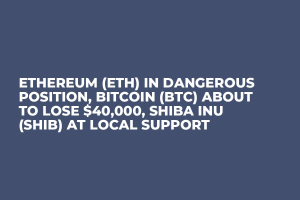
Disclaimer: The opinions expressed by our writers are their own and do not represent the views of U.Today. The financial and market information provided on U.Today is intended for informational purposes only. U.Today is not liable for any financial losses incurred while trading cryptocurrencies. Conduct your own research by contacting financial experts before making any investment decisions. We believe that all content is accurate as of the date of publication, but certain offers mentioned may no longer be available.
A staking client is software that interacts with the network to validate transactions and propose new blocks. When staking cryptocurrency, users' funds are effectively locked in a smart contract and used to perform these network functions in return for rewards. The architecture of these clients is crucial for security and network stability.
Single-client setups, mentioned in the post criticizing Coinbase's staking methods, can be more vulnerable to network-wide outages or consensus bugs. If most network participants are using the same client and a bug is discovered in that client, it could lead to a large portion of the network going offline or agreeing to incorrect state transitions.
This happened in November 2020 with Ethereum's Geth client, where a bug led to a chain split. A multi-client approach, where the network is supported by different software clients, is considered a best practice as it helps to prevent any single point of failure.
Importance of multi-client staking environments
In a staking environment, nodes run clients to participate in blockchain consensus. A single-client staking setup refers to a situation where all, or the majority of, nodes run the same client software. This poses a systemic risk to the network:
Consensus bugs: If a consensus bug appears in the single client, it could lead to a significant portion of the network failing or splitting into different forks, as all nodes would be affected simultaneously.
AdvertisementCentralization risk: A single-client setup can lead to centralization, where the development and maintenance of the network are dependent on a single team or company.
Security weaknesses: Homogeneity in clients can lead to uniform security vulnerabilities that could be exploited network-wide.
Transitioning to a multi-client environment diversifies these risks by ensuring that no single bug or exploit can affect the entire network, improving the resilience and stability of the network.

 Godfrey Benjamin
Godfrey Benjamin Tomiwabold Olajide
Tomiwabold Olajide Arman Shirinyan
Arman Shirinyan Yuri Molchan
Yuri Molchan